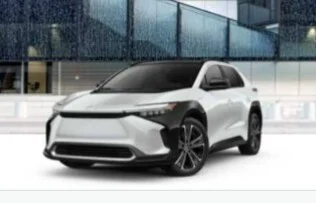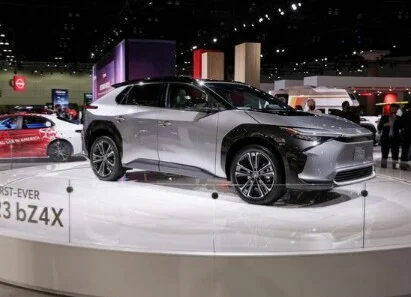Electric Vehicle
In an era of rapidly advancing technology, the automotive industry is witnessing groundbreaking innovations that are transforming the way we drive.
Vehicle-to-Vehicle (V2V) communication is one such revolution, leveraging wireless technology to enable vehicles to share real-time information with each other. This cutting-edge communication system enhances driving safety, improves traffic flow, and paves the way for a more connected and efficient transportation ecosystem. In this article, we will explore the concept of Vehicle-to-Vehicle and its impact on the future of driving.
Understanding Vehicle-to-Vehicle (V2V) Communication
Vehicle-to-Vehicle communication is a wireless communication system that allows vehicles to exchange data with each other. Using dedicated short-range communication (DSRC) or cellular networks, V2V technology enables vehicles to share information such as speed, location, acceleration, and direction. This real-time data exchange provides vehicles with a comprehensive understanding of their surroundings and enhances situational awareness on the road.
Enhanced Driving Safety
V2V communication is a game-changer for driving safety. By sharing information about their position, speed, and trajectory, vehicles can anticipate potential collisions, even when the objects are not within the line of sight.
V2V-equipped vehicles can receive warnings and alerts from other vehicles, enabling drivers to take proactive measures to avoid accidents. This technology holds immense potential for reducing the number of traffic accidents and saving lives on the road.
Traffic Efficiency and Congestion Reduction
V2V communication plays a vital role in improving traffic flow and reducing congestion. Vehicles equipped with V2V technology can exchange information about traffic conditions, such as congestion, accidents, or roadwork.
This real-time data allows drivers to make informed decisions, choose alternate routes, or adjust their driving behavior accordingly, resulting in smoother traffic flow and reduced delays. By optimizing traffic efficiency, V2V communication contributes to a more sustainable and time-efficient transportation system.
Intersection Safety and Collision Avoidance
V2V communication is particularly effective in enhancing intersection safety. By exchanging data about their position and intentions, vehicles approaching an intersection can coordinate their movements and anticipate potential conflicts.
V2V technology enables vehicles to communicate in real-time, providing warnings and alerts to prevent collisions. This capability significantly reduces the risk of accidents at intersections, which are notorious for their high accident rates.
Future Applications and Vehicle Autonomy
V2V communication serves as a foundational technology for the future of autonomous driving. As vehicles become increasingly autonomous, V2V communication will enable seamless coordination between vehicles, ensuring safe and efficient traffic interactions.
V2V technology, in combination with other advanced systems such as Advanced Driver Assistance Systems (ADAS) and Vehicle-to-Infrastructure (V2I) communication, will play a critical role in creating a connected and intelligent transportation network.
Vehicle-to-Vehicle (V2V) Communication Technology
Vehicle-to-Vehicle (V2V) Communication
| Feature | V2V Communication |
|---|---|
| Definition | A technology that enables vehicles to communicate with each other directly, sharing information about their location, speed, and other relevant data. |
| Benefits | Improved safety, reduced traffic congestion, enhanced efficiency, and improved driver assistance. |
| Applications | Collision avoidance, intersection management, cooperative adaptive cruise control, and emergency vehicle alerts. |
| Technology | Uses wireless communication technologies like Dedicated Short-Range Communication (DSRC) and Cellular Vehicle-to-Everything (C-V2X). |
| Challenges | Security concerns, privacy issues, and infrastructure requirements. |
| Future Potential | V2V communication is expected to play a crucial role in the development of autonomous vehicles and connected transportation systems. |
Vehicle-to-Vehicle (V2V) communication technology is a wireless communication system that enables vehicles to exchange information with each other. The primary goal of V2V communication is to improve road safety and enhance traffic efficiency by allowing vehicles to share critical data about their position, speed, direction, and other relevant information.
Key components of V2V communication technology include:
1. Wireless Communication: V2V systems use Dedicated Short Range Communications (DSRC) or Cellular Vehicle-to-Everything (C-V2X) technology to facilitate real-time communication between vehicles. DSRC is based on the IEEE 802.11p standard and operates in the 5.9 GHz frequency band. C-V2X, on the other hand, utilizes the cellular network infrastructure to enable communication.
2. Ad Hoc Networking: V2V communication systems form ad hoc networks, where vehicles act as both data transmitters and receivers. These networks are self-organizing and do not rely on a central infrastructure for operation.
3. Safety Applications: V2V technology primarily focuses on safety applications, such as Forward Collision Warning (FCW), Emergency Electronic Brake Light (EEBL), Blind Spot Warning (BSW), and Intersection Movement Assist (IMA). These applications help vehicles exchange information to warn drivers about potential hazards, prevent accidents, and assist in critical situations.
4. Data Security and Privacy: Ensuring the security and privacy of V2V communications is crucial. Advanced encryption and authentication mechanisms are employed to protect the data exchanged between vehicles, preventing unauthorized access and malicious attacks.
5. Vehicle Awareness: V2V-equipped vehicles can "see" beyond their line of sight by receiving information from other vehicles, providing drivers with a more comprehensive awareness of their surroundings and potential hazards.
6. Autonomous Vehicle Integration: V2V communication plays a vital role in the development of autonomous vehicles. By sharing data with each other, autonomous cars can coordinate their actions, leading to more efficient traffic flow and increased safety.
Benefits of Vehicle-to-Vehicle communication technology include:
1. Collision Avoidance: V2V systems help prevent accidents by providing real-time warnings to drivers about potential collisions or hazards.
2. Improved Traffic Flow: With better information exchange, V2V-enabled vehicles can optimize their speed and trajectory, leading to reduced traffic congestion and smoother traffic flow.
3. Reduced Emissions: By optimizing driving patterns and reducing the number of sudden stops or accelerations, V2V technology can contribute to lower fuel consumption and emissions.
4. Enhanced Pedestrian Safety: V2V communication can also extend to pedestrian devices, alerting drivers when pedestrians equipped with compatible devices are in close proximity.
Despite its numerous advantages, widespread adoption of V2V communication faces challenges such as standardization, infrastructure development, privacy concerns, and addressing potential cybersecurity risks. However, ongoing research and collaboration among automakers, government agencies, and technology providers aim to overcome these hurdles and make V2V communication an integral part of future transportation systems.
Conclusion Vehicle-to-Vehicle (V2V) Communication
Vehicle-to-Vehicle (V2V) communication is revolutionizing driving safety, efficiency, and the future of transportation. By enabling vehicles to exchange real-time information, V2V technology enhances situational awareness, improves intersection safety, and contributes to smoother traffic flow.
V2V communication continues to evolve and gain widespread adoption, it will play a vital role in the development of autonomous vehicles and the creation of a more connected and intelligent transportation ecosystem. With V2V technology, the road ahead is paved with increased safety, efficiency, and a new era of driving experiences.


